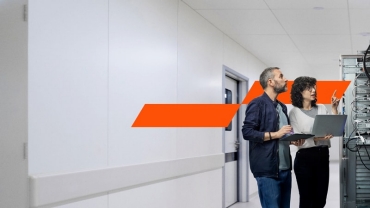
The power of people, reimagined.
Workforce

The pressure to optimise costs and maximise productivity is constant. But today, it's complicated by disruptive technology, extreme geopolitical stresses, evolving risk and regulation, and the ongoing race to find and keep the right talent and skills. These forces are reshaping the workplace and introducing challenges that impact your entire organisation.
At PwC, our passionate community of solvers include organisational strategists and human resource (HR) practitioners in addition to regulatory, employment tax, technology, pensions, and payroll specialists. We work together to help you realise your people's potential, build trust and deliver sustained outcomes.

Explore the breadth and depth of our experience
Our integrated team works across markets and capabilities to help you establish a strategy that addresses the realities of your business. Whether you want to improve the performance of your workforce, manage your organisation's employment tax-related risks, or maximise the value of mergers and acquisitions, we have the strategic knowledge and hands-on implementation experience to help you unleash the human potential in your business.
- Workforce consulting
- Employment tax and payroll
- Gender pay gap reporting
- Pensions
Workforce consulting
Business leaders face significant challenges in reshaping their workplaces. From hybrid working and digital transformation to skills gaps and fostering a positive culture, there are many issues vying for priority as organisations respond to the changing nature of work. This is further complicated by the scarcity of available talent and the pervasive influence of 'the great resignation'.
Overcoming these challenges is critical to future success, however, and business leaders must ensure that their organisations' people strategies both support the strategic goals of the business and attract the best talent in the market.
We can support you in this process. From helping you identify the future capabilities, resources and ways of working you require to supporting your organisation's transition, our teams have the knowledge and experience needed to create lasting value. We also have strong, future-oriented propositions that are underpinned by a focus on digital and technological solutions and tailored to your specific needs. These include strategic workforce planning, diversity and inclusion, culture, change management, organisation design, HR transformation, people in deals, rewards and executive search.
Employment tax and payroll
The employment tax landscape is increasingly complex. Legislative changes coupled with innovative incentive strategies mean that tax functions are often stretched to capacity.
It is not only challenging, it is also fraught with risk. Both Revenue and the general public are acutely aware of organisations' tax affairs, and it is imperative that compliance is achieved to avoid reputational and financial damage.
Our team of employment tax and payroll experts can help you navigate the complexities involved in meeting your employment tax obligations, whether that involves tax compliance, tax-effective incentives, remote working or social security. We can also conduct an employment tax health check to ensure that your organisation is well-placed to deal with a risk review or audit in the future.
Gender pay gap reporting
Organisations in Ireland with more than 250 employees are now obliged to report on their gender pay gap, and this obligation will be extended to organisations with 50 or more employees in time.
As part of this process, employers will need to disclose the pay differences between male and female employees, data across a range of working arrangements, the proportion of male and female employees who receive benefits-in-kind and bonuses, and the number of male and female employees across four pay bands. There may also be a requirement to publish differences in pay by reference to job classification.
The gender pay gap team at PwC can help you prepare for this reporting obligation and achieve compliance. We can also assist in the creation and implementation of an effective communications plan and help you identify and accelerate projects that enhance your organisation's approach to diversity and inclusion.
Pensions
An evolving regulatory environment coupled with a volatile geopolitical and macroeconomic landscape makes corporate pension provision a challenging prospect. As organisations seek sustainable pension solutions that minimise risk and meet the needs of their many stakeholders, achieving the optimal pension strategy for your business may require expert help and an unbiased perspective.
PwC's pensions team can help your organisation navigate the changing obligations on employers, whether that's auto-enrolment or IORP II, and develop a long-term pensions strategy that is cost-effective, compliant and delivers a positive employee experience.
We can also support individuals as they plan their savings and investments with a view to safeguarding their own retirement and their family's financial health.
Meet the Workforce team
The power of people, reimagined.
PwC Ireland’s Workforce Hopes and Fears Survey
Why motivation, trust and skills will power performance in the AI era.
Contact us

Workforce Tax and Payroll Partner , PwC Ireland (Republic of)
Tel: +353 87 276 8112












Menu